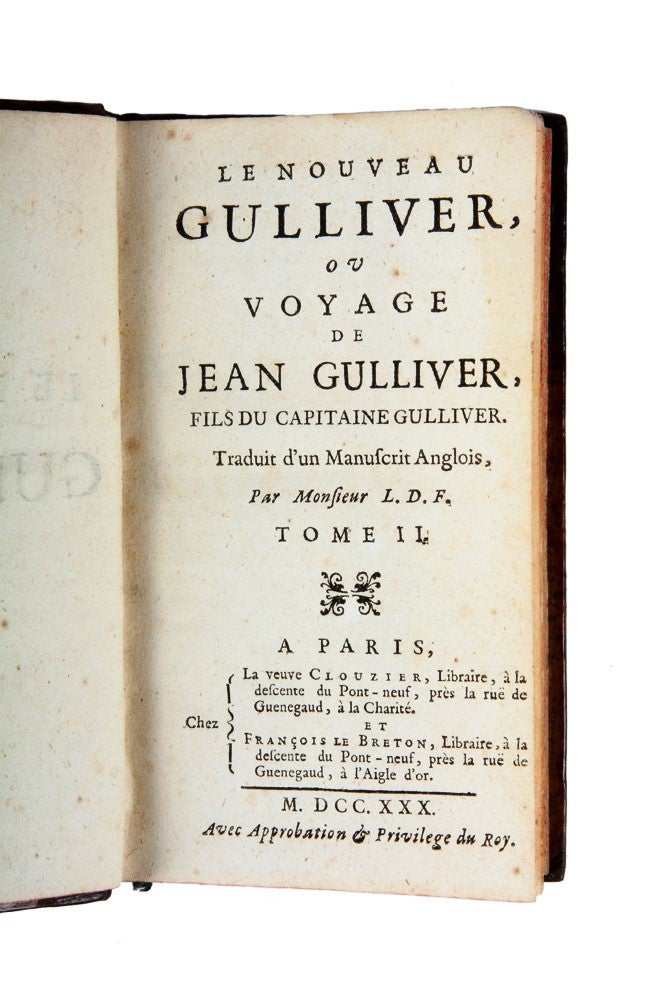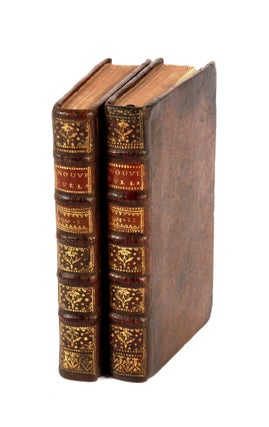Le Nouveau Gulliver, ou Voyage de Jean Gulliver…
Le Nouveau Gulliver, ou Voyage de Jean Gulliver, fils du Capitaine Gulliver…
Paris: Clouzier & F. Le Breton, 1730.
Two volumes, a very pretty set in contemporary mottled calf, spine gilt in compartments, double red labels.
Gulliver's son Jean
First edition of this sequel to Swift's Gulliver's Travels by the first French translator of the work. The impressive success of Desfontaines' heavily bowdlerised 1727 translation of Swift's famous novel no doubt provided the impetus to this unofficial sequel. The fiction that it was translated from an original English text is exposed in the preface, where its relationship to Gulliver's Travels is said to be akin to that of Fénélon's Aventures de Telemaque with the Odyssey. As Gove comments, this is one of the very few works to use Gulliver as a model for imitation (unlike the endless array of Robinsonades after Defoe) and thus occupies an important position in the history of Swift's novel.
First edition of this sequel to Swift's Gulliver's Travels by the first French translator of the work. The impressive success of Desfontaines' heavily bowdlerised 1727 translation of Swift's famous novel no doubt provided the impetus to this unofficial sequel. The fiction that it was translated from an original English text is exposed in the preface, where its relationship to Gulliver's Travels is said to be akin to that of Fénélon's Aventures de Telemaque with the Odyssey. As Gove comments, this is one of the very few works to use Gulliver as a model for imitation (unlike the endless array of Robinsonades after Defoe) and thus occupies an important position in the history of Swift's novel.
Here, Gulliver's son Jean travels to four lands. He is at his most spirited describing the Island of Babilary in which women are superior, but the other lands have some of the inventiveness, if not the venom, of Swift: the hunch-backed Crump-backs who regard their own form as the ideal, or the Letalispons, who 'live to be 120 yet always look attractive because they begin a second innings at 60' (Dunmore). The work quickly went through many editions, including translation into English as early as 1731.
Negley, 175; Presley, 4 XII, p. 3; Teerink, 1238.
Condition Report: Faint waterstains to a few leaves of the second volume.
Price (AUD): $2,200.00
US$1,418.11 Other currencies



